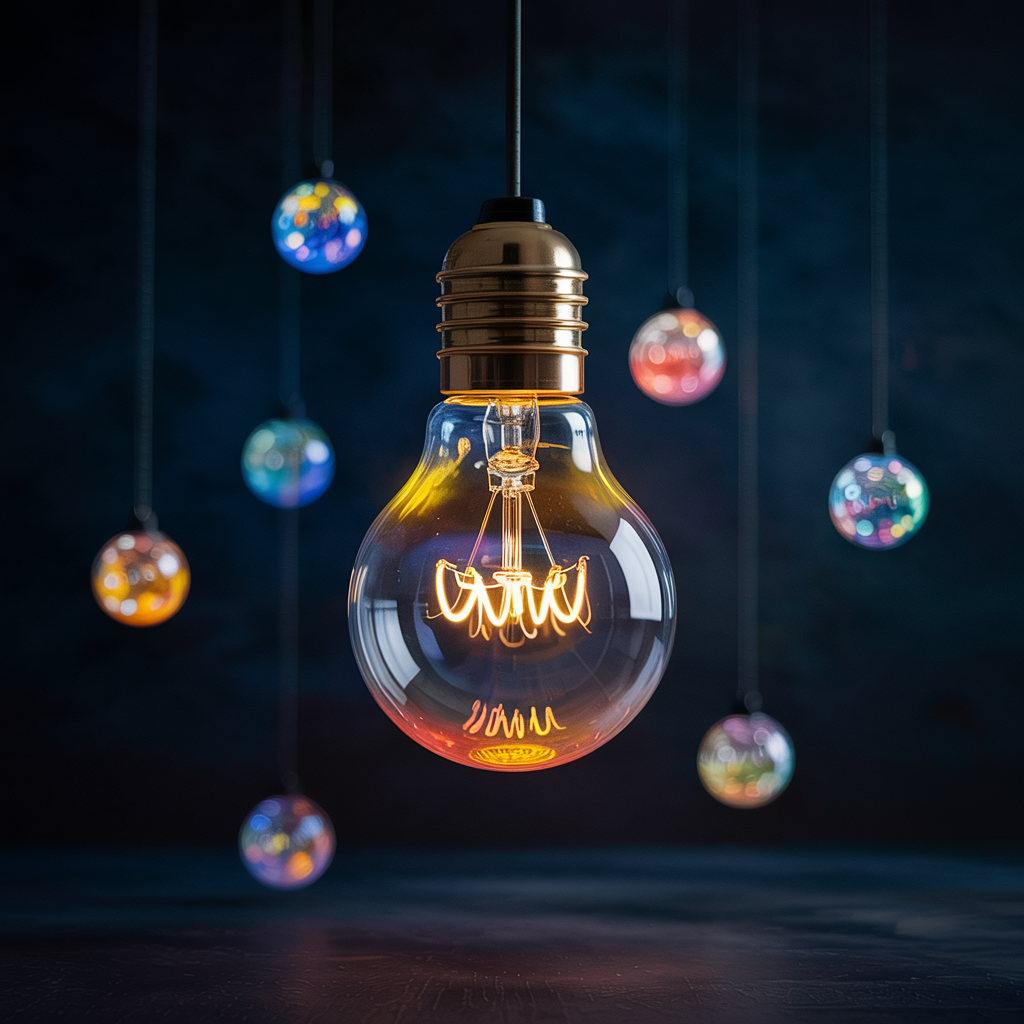How Many Can Lights in a 20×20 Room: The Ultimate Guide To Can Lights
Lighting a large space like a 20×20 room effectively can be tricky. How many can lights in a 20×20 room do you actually need? This comprehensive guide will help you determine the ideal number of can lights for your 20×20 room, considering factors like room purpose, desired brightness, and ceiling height. We’ll explore different lighting…
Lighting a large space like a 20×20 room effectively can be tricky. How many can lights in a 20×20 room do you actually need? This comprehensive guide will help you determine the ideal number of can lights for your 20×20 room, considering factors like room purpose, desired brightness, and ceiling height. We’ll explore different lighting scenarios, discuss the pros and cons of various approaches, and offer practical advice to illuminate your space perfectly. You’ll learn how to calculate lighting needs, choose the right wattage and color temperature, and even understand the basics of electrical wiring. By the end, you’ll be confident in your ability to design a stunning and functional lighting scheme for your 20×20 room.
Can lights, also known as recessed lights, are fixtures that are installed into the ceiling, leaving only the light itself visible. They
offer a clean, minimalist aesthetic and are highly versatile. They come in various sizes, wattages, and styles, allowing for customization.
How Many Can Lights in a 20×20 Room?
For a 20×20 room (400 sq. ft), you’ll typically need 8 can lights. A common rule is one 6-inch can light per 50 square feet. Space them about 4–6 feet apart in a grid pattern for even illumination, adjusting based on room use and ceiling height.
Why Use Can Lights?

Can lights are a popular choice for many reasons. They provide even lighting distribution, are energy-efficient, and can be easily dimmed to control the ambiance. Their recessed design makes them unobtrusive and visually appealing.
Key Features of Can Lights
Key features to consider include wattage (lumens), color temperature (measured in Kelvin), and the light’s color rendering index (CRI). Higher CRI values indicate more accurate and natural-looking colors.
Read More: 15 Excellent Mood Lighting Bedroom Ideas & Hacks
Calculating Lighting Needs for a 20×20 Room
| Lighting Type | Purpose | Recommended Lumens | Fixture Type | Quantity Needed |
|---|---|---|---|---|
| Ambient Lighting | General room illumination | 8,000–12,000 lumens | Recessed can lights | 8 lights (6-inch, 900–1500 lumens each) |
| Task Lighting | Reading, work, or vanity use | 1,500–3,000 lumens | Desk lamp, pendant light | 1–2 fixtures as needed |
| Accent Lighting | Highlight decor or focal points | 750–1,500 lumens | Wall sconces, LED strips | 2–4 fixtures or strips |
| Decorative Lighting | Style and ambiance | Varies (soft glow) | Chandeliers, string lights | 1–2 based on design |
| Mood Lighting | Relaxation and atmosphere | 500–1,500 lumens | Dimmable LEDs, smart bulbs | 4–6 depending on placement |
Calculating Square Footage
A 20×20 room has a total area of 400 square feet (20 ft x 20 ft). This is crucial for determining the total amount of light needed.
Determining the Required Lumens
The general rule of thumb is to aim for 1.5 to 2 lumens per square foot for general ambient lighting. For a 400 sq ft room, this translates to 600-800 lumens.
Understanding Lumens vs. Watts
Lumens measure the brightness of a light bulb, while watts measure its energy consumption. Modern LED bulbs offer high lumens at low wattage, maximizing efficiency.
Considering Ambient vs. Task Lighting
Ambient lighting provides overall illumination, while task lighting focuses on specific areas (e.g., reading lamp). Can lights primarily serve as ambient lighting.
Calculating the Number of Can Lights Based on Lumens
Divide the total desired lumens (600-800) by the lumens per bulb to get the estimated number of lights. Example: If each light outputs 600 lumens, you’d need 1-2 can lights for ambient light.
Read More: What Wattage Light Bulb for Living Room? In-Depth Answer
Factors Affecting Can Light Placement

Ceiling Height
Higher ceilings require more lights to evenly distribute the illumination, while lower ceilings may necessitate fewer.
Room Layout and Furniture
Consider the placement of furniture. Avoid placing lights directly above large pieces of furniture to avoid glare.
Window Placement
Natural light from windows can significantly impact the number of can lights needed.
Architectural Features
Beams, recessed areas, or other architectural details may influence can light positioning and overall number.
Different Types of Can Lights
LED Can Lights
LED can lights are the most energy-efficient and long-lasting option, offering significant savings over traditional incandescent or halogen bulbs.
Halogen Can Lights
Halogen can lights offer brighter, warmer light, but consume more energy and have a shorter lifespan compared to LEDs.
Incandescent Can Lights
These are the least energy-efficient, but they are inexpensive initially.
Dimmable Can Lights
Dimmable can lights offer control over the brightness, allowing you to adjust the ambiance according to your needs.
Can Light Installation and Wiring
Basic Electrical Knowledge
Basic electrical knowledge is crucial. This involves understanding electrical circuits, voltage, and amperage. If you aren’t comfortable, hiring a qualified electrician is crucial.
Wiring a Can Light
The process involves connecting the wires (hot, neutral, and ground) of the can light to the corresponding wires in your ceiling wiring.
Safety Precautions
Always turn off the power at the breaker before starting any electrical work.
Professional Installation
If you lack the necessary skills or confidence, hiring a qualified electrician for installation is strongly recommended. It’s crucial for safety and to avoid potential damage.
Choosing the Right Wattage and Color Temperature
Wattage Considerations
Select a wattage that aligns with your desired lumens for optimal brightness.
Color Temperature
Color temperature is measured in Kelvin (K). Lower K values (2700K) produce warmer light, while higher K values (5000K) produce cooler light.
Color Rendering Index (CRI)
CRI indicates how accurately colors are rendered under the light. Higher CRI values (80 or above) are ideal for spaces where accurate color reproduction is important.
Dimming Capabilities
Ensure that the chosen can lights and dimmer switch are compatible for smooth dimming functionality.
Maintaining Your Can Lights
Cleaning and Dusting
Dust and debris accumulation can reduce light output and shorten the lifespan of the can lights. Regular cleaning is important.
Bulb Replacement
LEDs have a long lifespan, but eventually, they will need to be replaced.
Troubleshooting Problems
If you encounter any issues, such as flickering or non-functioning lights, refer to the manufacturer’s instructions or consult a qualified electrician.
Frequently Asked Questions
What is the optimal distance between can lights?
The optimal distance between can lights varies depending on the room’s size, ceiling height, and the wattage of the bulbs. As a general rule, spacing them 6-8 feet apart is a good starting point, but you may need to adjust based on your specific needs.
Can I install can lights myself?
While it is possible to install can lights yourself, it requires basic electrical knowledge and experience. Improper installation can lead to electrical hazards, so hiring a qualified electrician is strongly recommended if you are not comfortable with DIY electrical work.
How do I determine the appropriate number of can lights for a 20×20 room with high ceilings?
For high ceilings, you’ll likely need more can lights to ensure even illumination. Increase the number of lights and potentially decrease the spacing between them to compensate for the increased distance between lights and the floor.
What are the different types of finishes available for can lights?
Can lights are available in various finishes, such as brushed nickel, satin nickel, polished chrome, oil-rubbed bronze, and white. The finish should complement your room’s décor and fixtures.
What is the best color temperature for a living room?
For a living room, a warmer color temperature (2700K-3000K) is generally preferred as it creates a cozy and inviting atmosphere.
Final Thoughts
Determining the right number of can lights for your 20×20 room involves carefully considering several factors. The square footage, ceiling height, desired brightness, and even the purpose of the room all play a role. While a general guideline suggests 1.5-2 lumens per square foot, remember that the perfect lighting scheme is a balance of practicality, aesthetics, and personal preference. Don’t be afraid to experiment with different arrangements and intensities to achieve the ideal ambiance. Remember to always prioritize safety and consider professional installation if needed. With careful planning and execution, you can transform your 20×20 room into a beautifully lit space. Ready to illuminate your space? Start planning your perfect lighting today!

